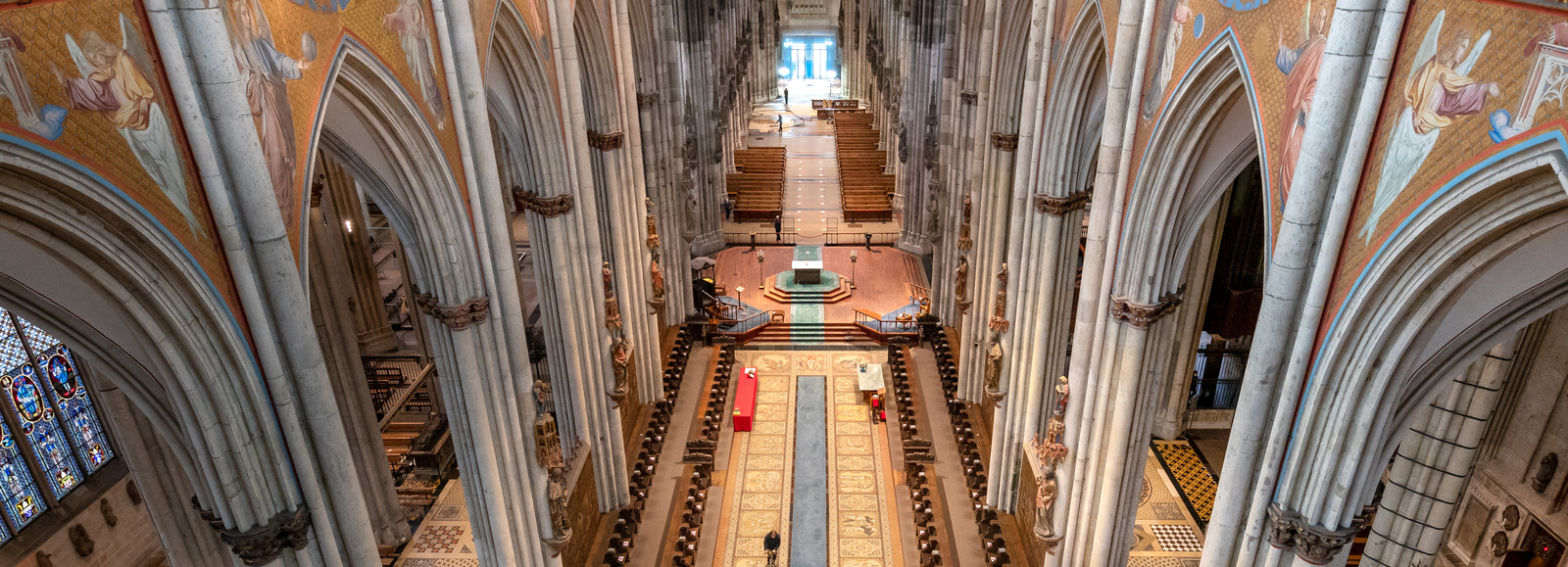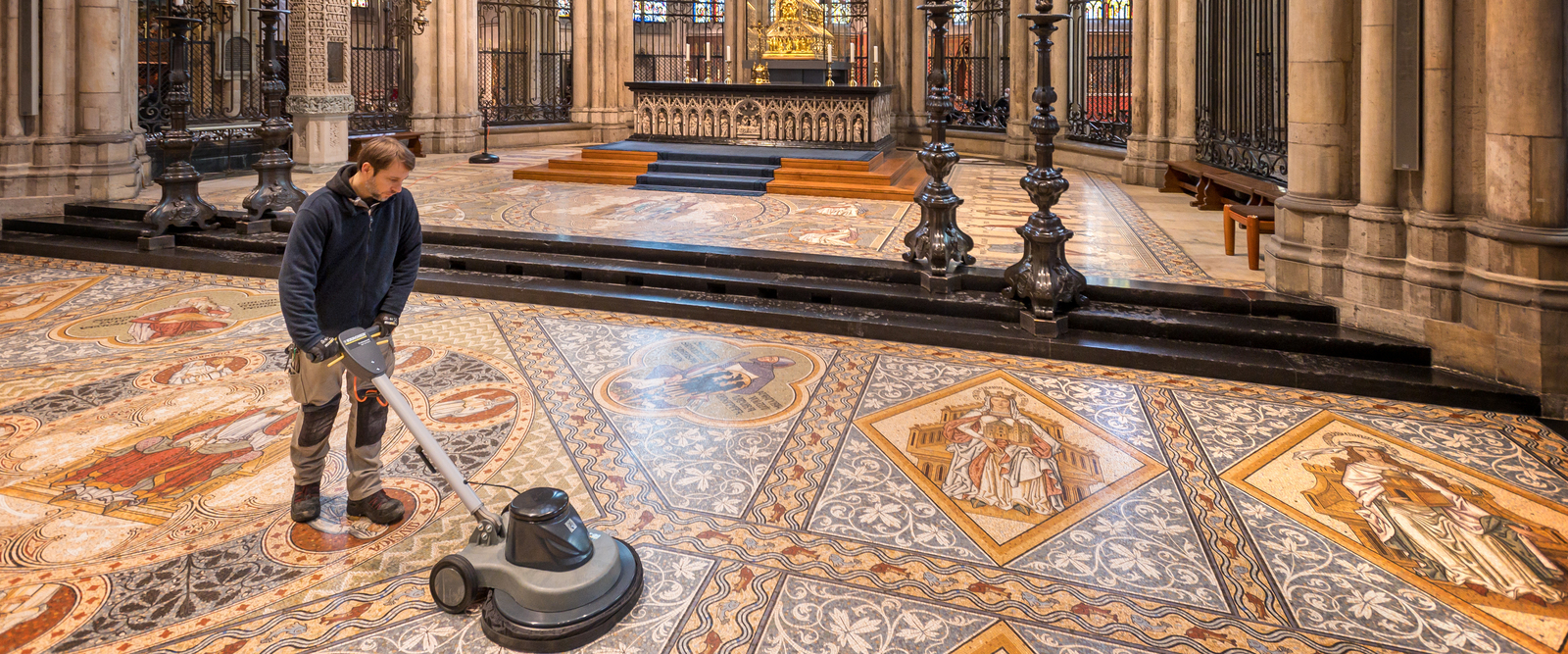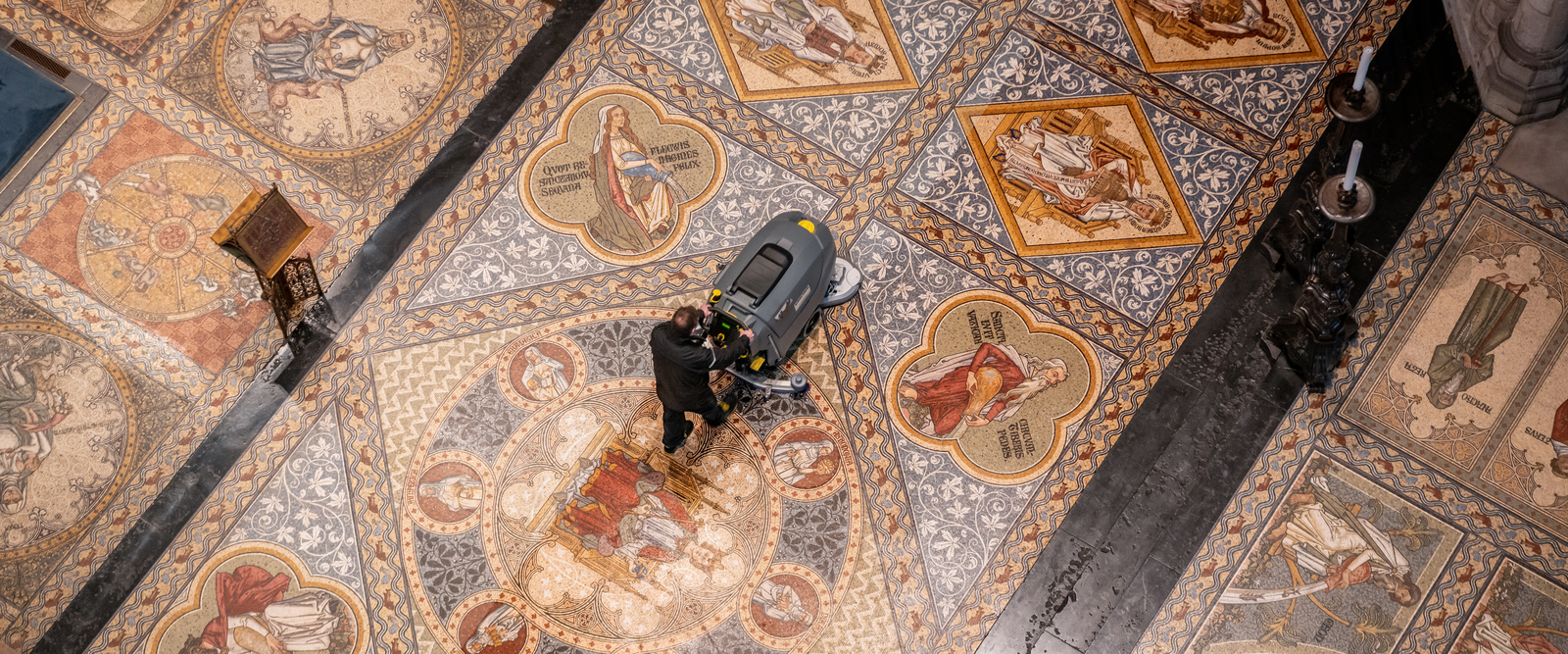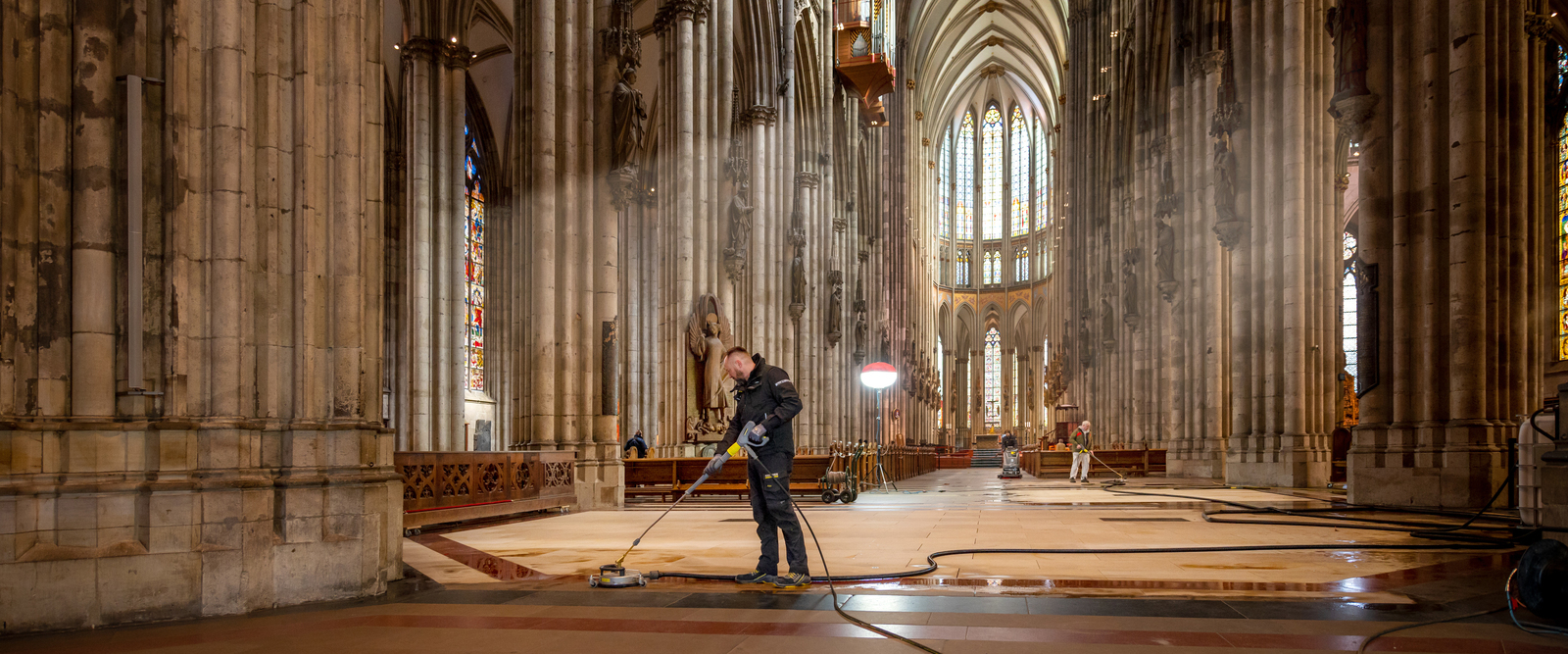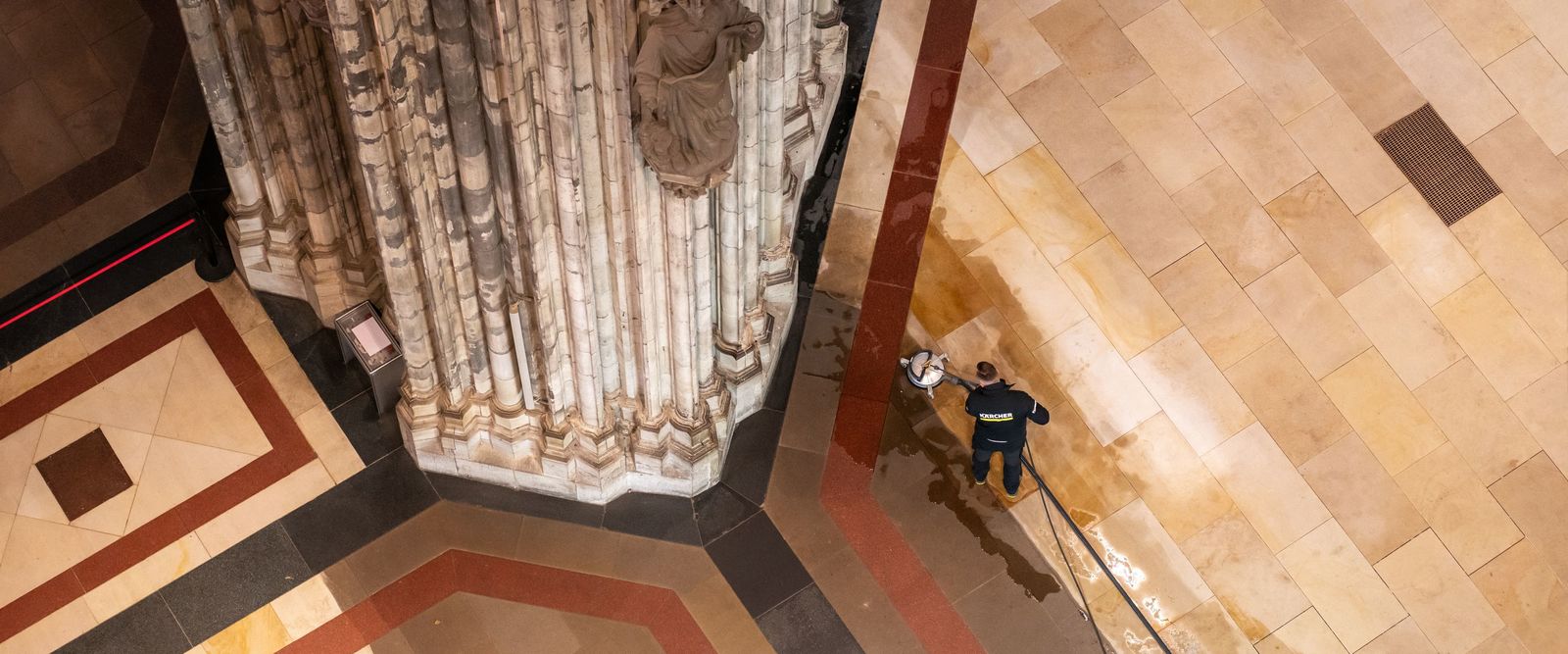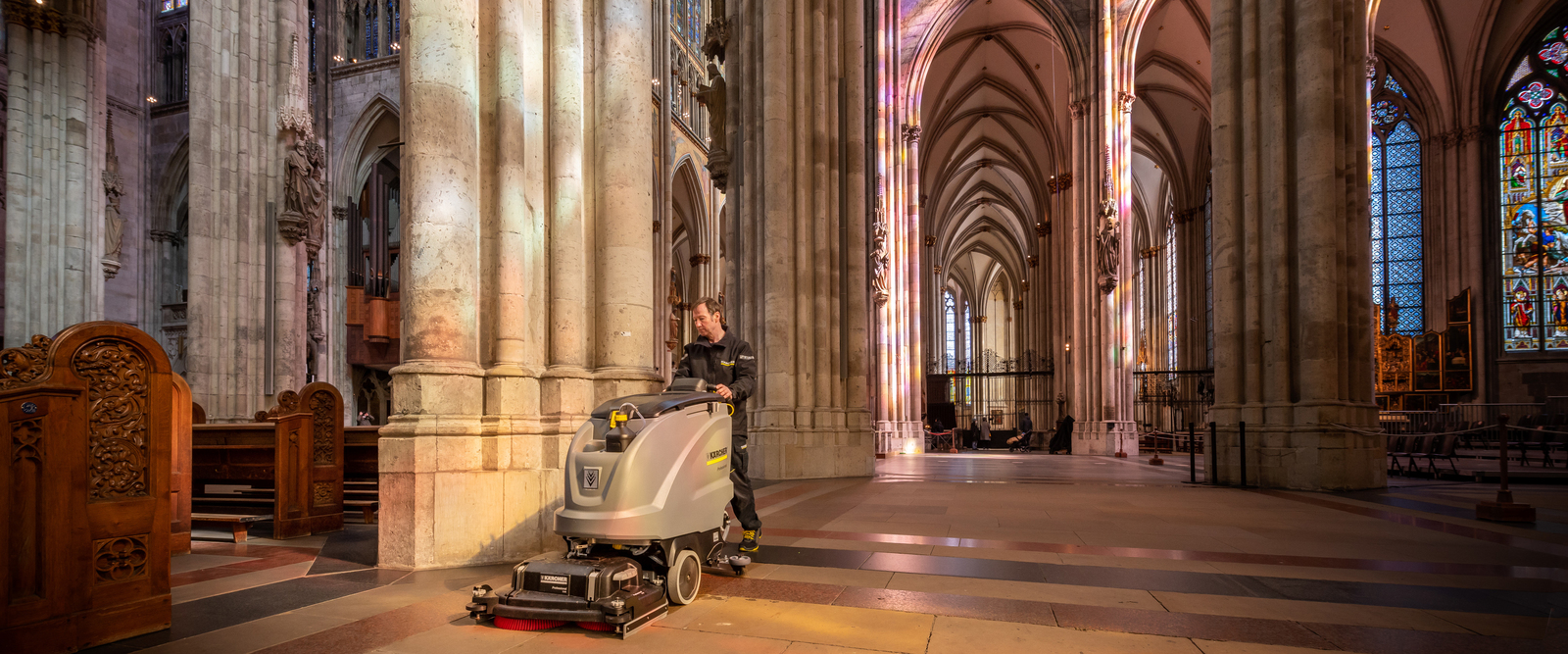Six million visitors per year leave their mark.
Kärcher is supporting large-scale deep cleaning and maintenance cleaning for the historic sandstone and mosaic floor in Cologne Cathedral. This is the second project for which Kärcher is working in collaboration with the Cologne Cathedral workshop. Kärcher experts are carrying out the first stage of cleaning, whilst also providing expertise and technology for further work to be carried out, at no cost to the cathedral workshop. Here is an overview of the challenges posed when carrying out cleaning tasks in one of Europe's most famous buildings.
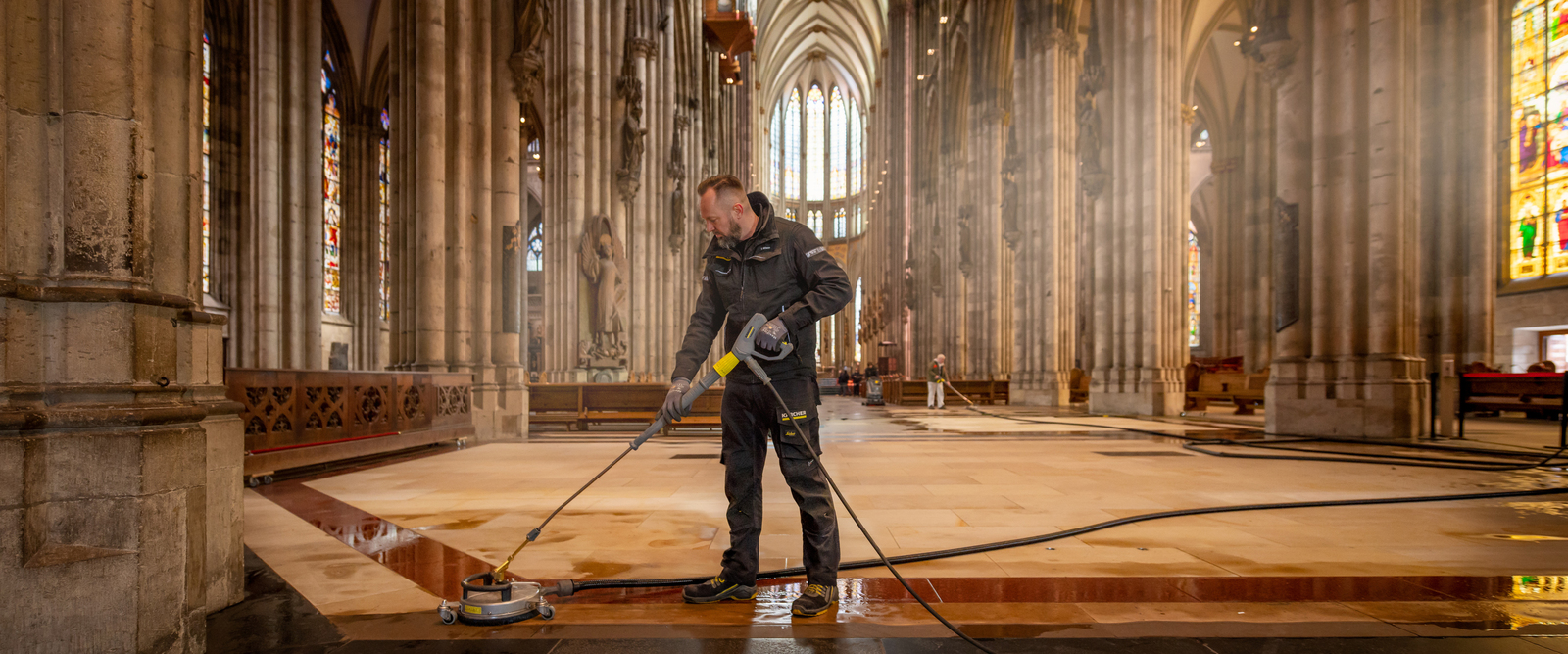
Traces left by millions of feet
The cathedral's sandstone and mosaic floor dates back to the late 19th century. Since then, up to six million visitors per year have left their mark on it, carrying dirt from the street into the historic building, which has meant that the floor's appearance has suffered: The sandstone has been covered by a layer of dark grey and the mosaics have lost their brilliant radiance underneath several layers of wax and care agents.
Together with the cathedral workshop's stone restorers, Kärcher has developed a deep cleaning and maintenance cleaning concept for the floors, the implementation of which began in March 2021. Since then, every section that is cleaned reveals another piece of Obernkirchen sandstone from beneath the layer of dirt, lime and care agents. Maintenance cleaning with scrubber driers ensures that the floor's rejuvenated old lustre is preserved for as long as possible.
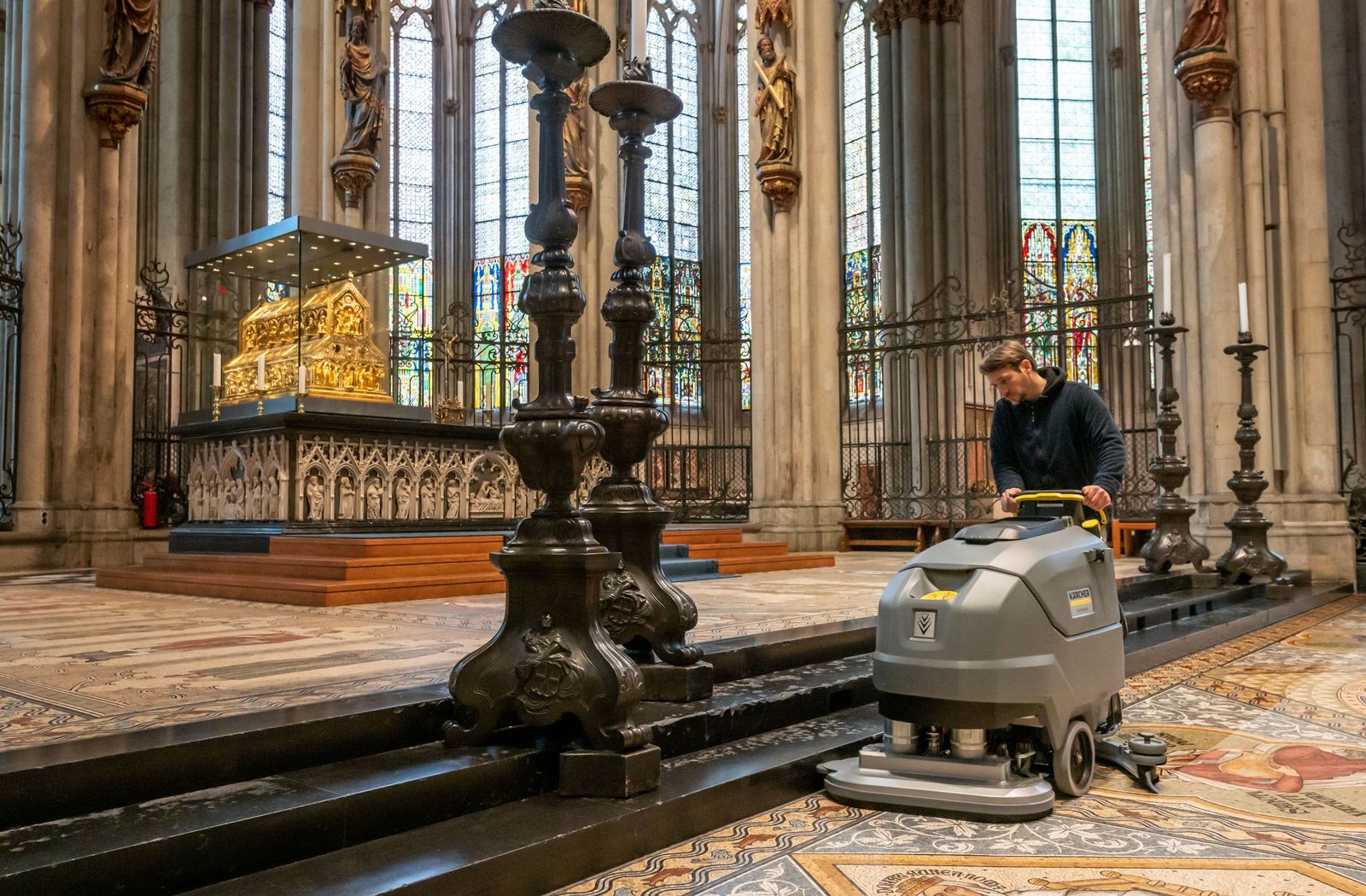
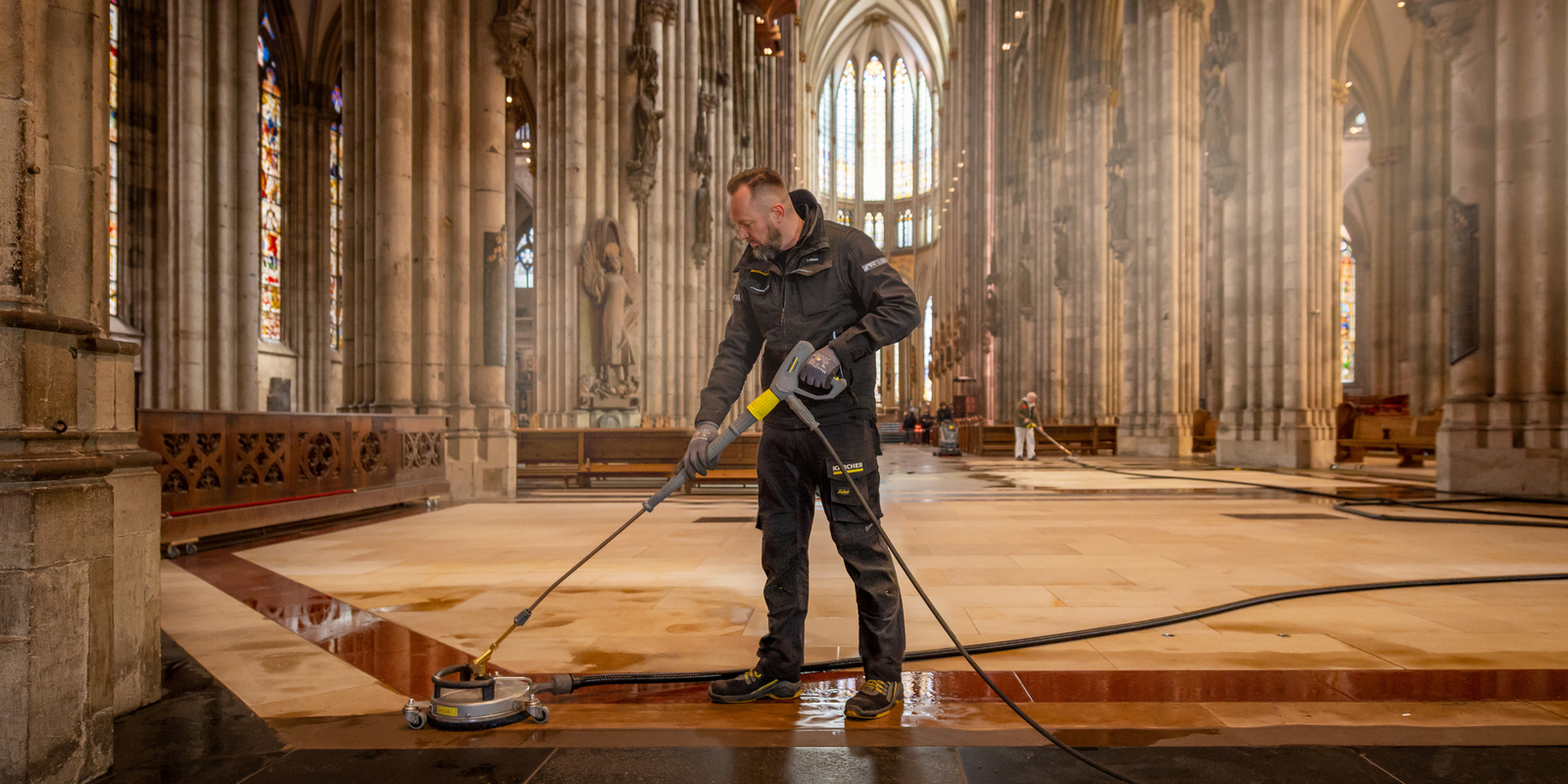
Using a hot water high-pressure cleaner in combination with a surface cleaner, dirt is removed from the pores of the 4000 m² sandstone floor in the nave with water at a temperature of 80 degrees and a pressure of 1–2 bar. The dirty water produced is immediately removed and directed away, meaning that work can be performed in a very targeted manner without spreading water and steam over a large area.
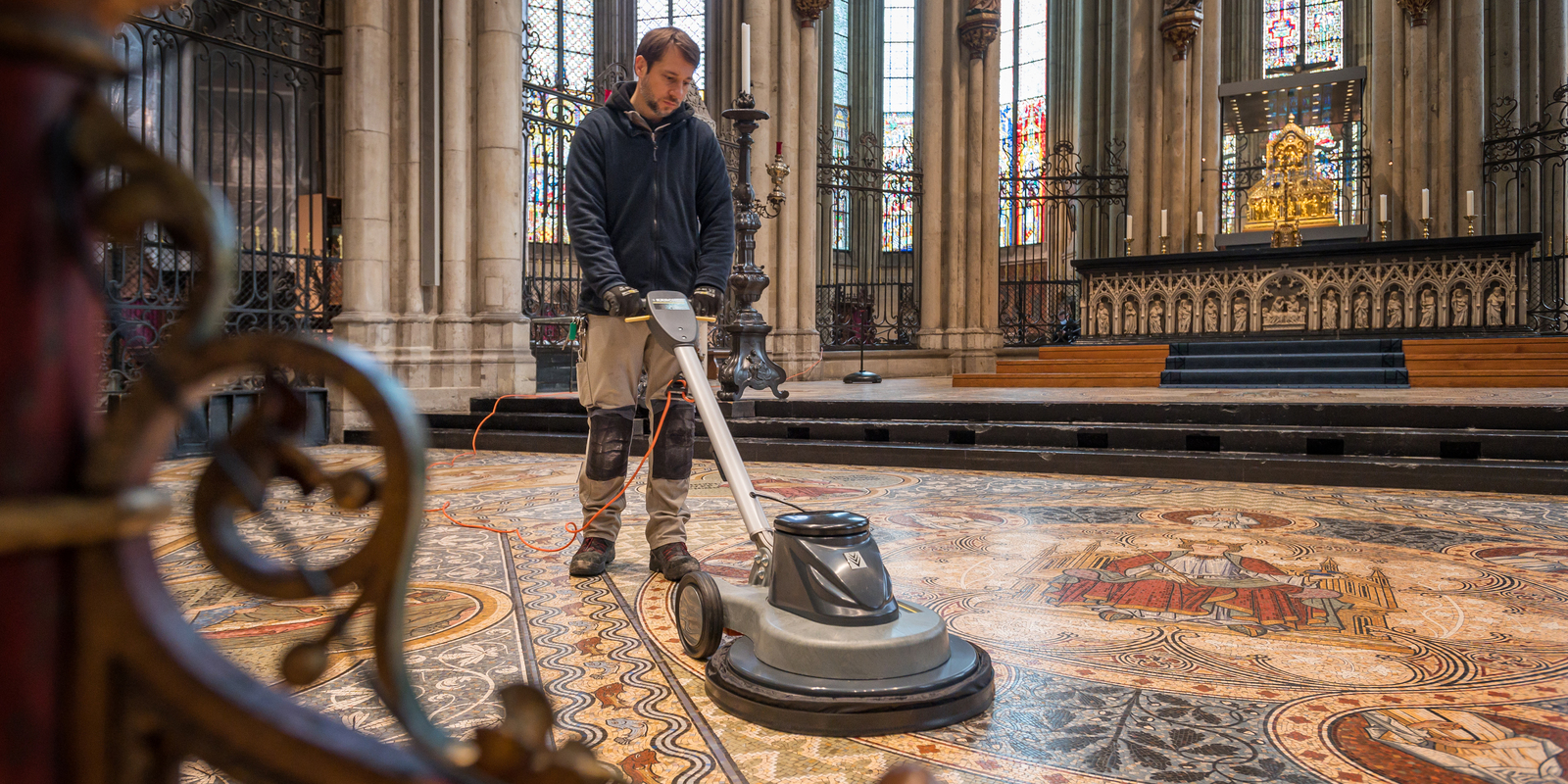
A layer of wax and care agents that has been applied over decades is removed from the mosaic floor using a Kärcher oscillating single-disc machine. The restorers will then carry out conservation work on the mosaic. After that, a fresh wax layer is applied using a high-speed polishing machine.
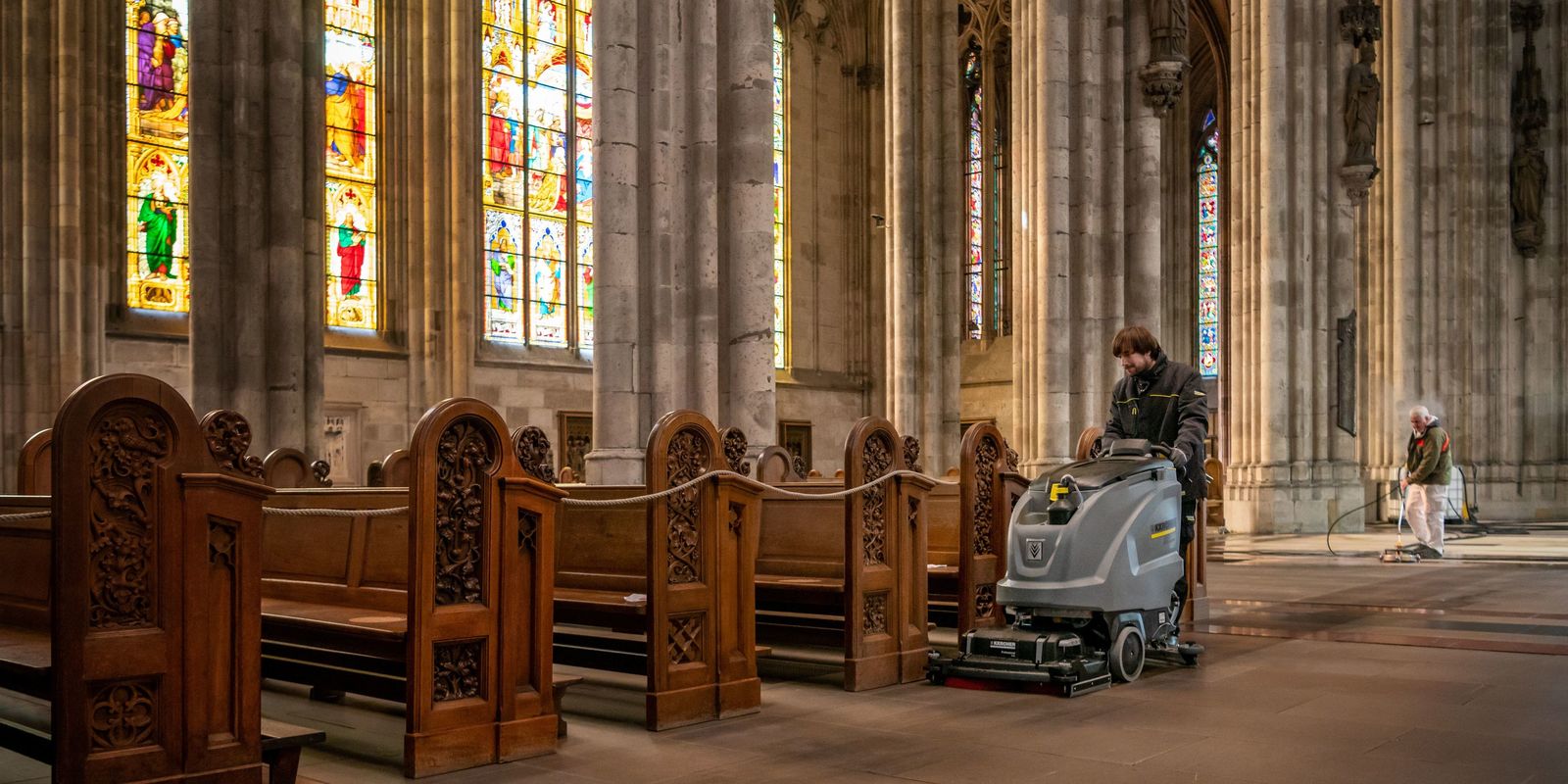
Staff at the cathedral workshop are using Kärcher scrubber driers in the future for ongoing maintenance cleaning of the floors in the cathedral.
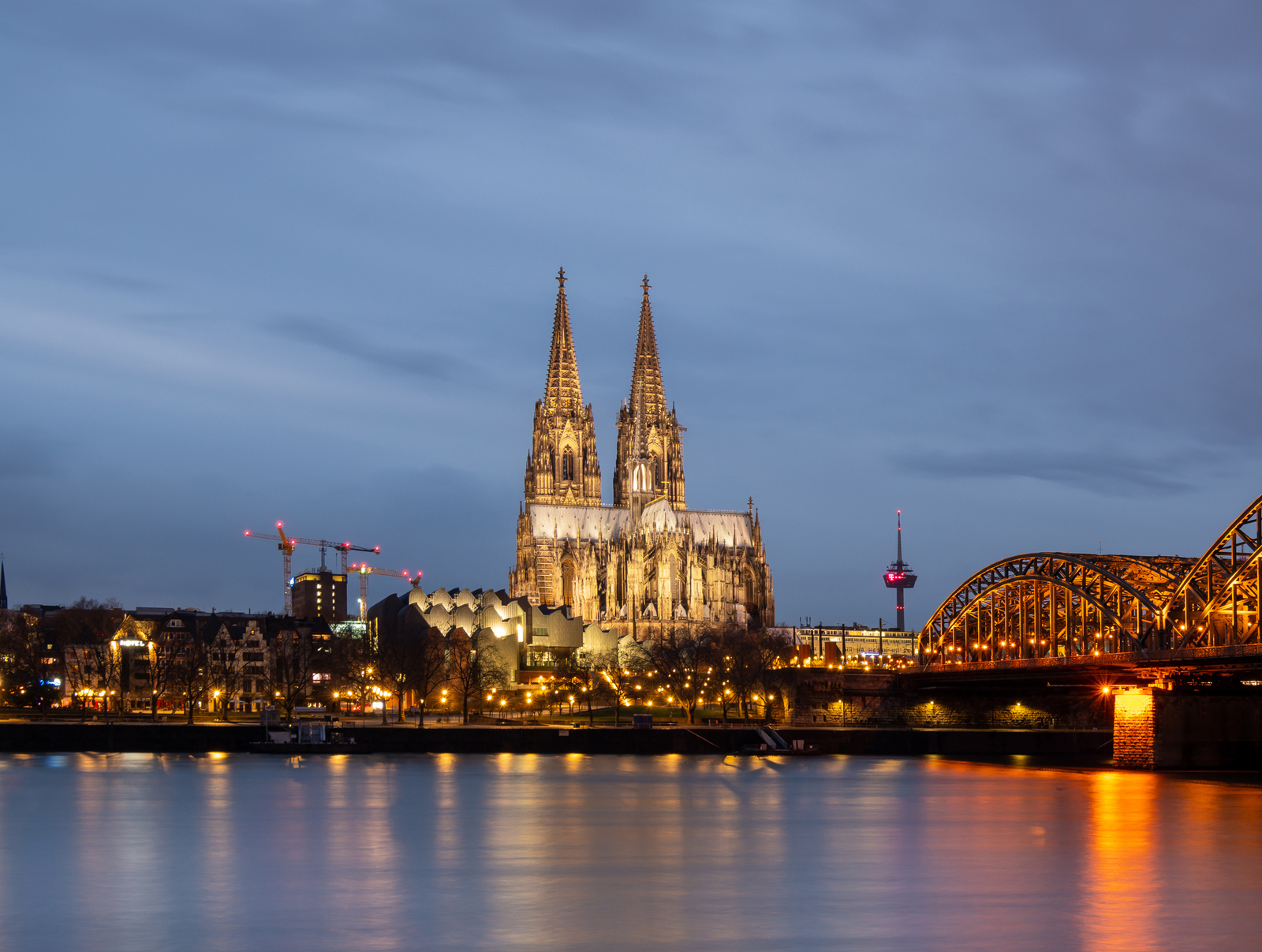
All of the facts at a glance
Country: Germany
City: Cologne
Type of soiling: Dirt from the street, occasional pieces of chewing gum, protective coats of wax
Cleaning technology: Hot water high-pressure cleaner with surface cleaner, various scrubber driers
For the restoration works on the mosaic floor: Single-disc scrubber, high-speed polishing machine
Execution: Early March 2021 – ongoing

